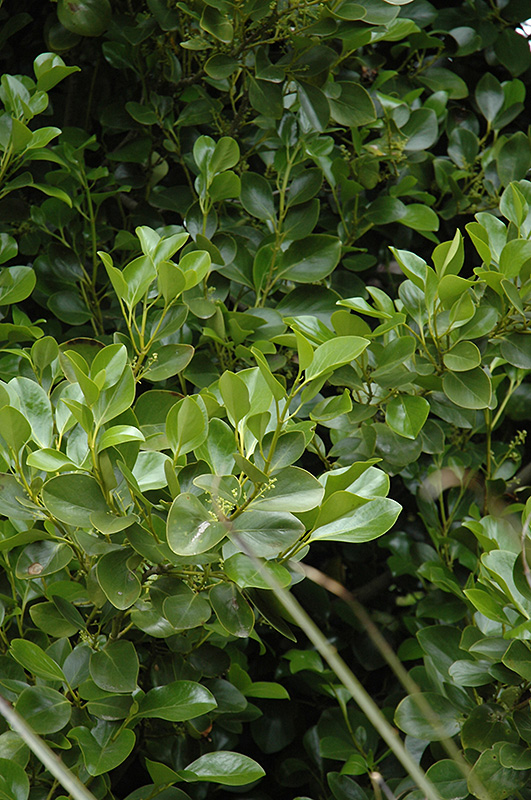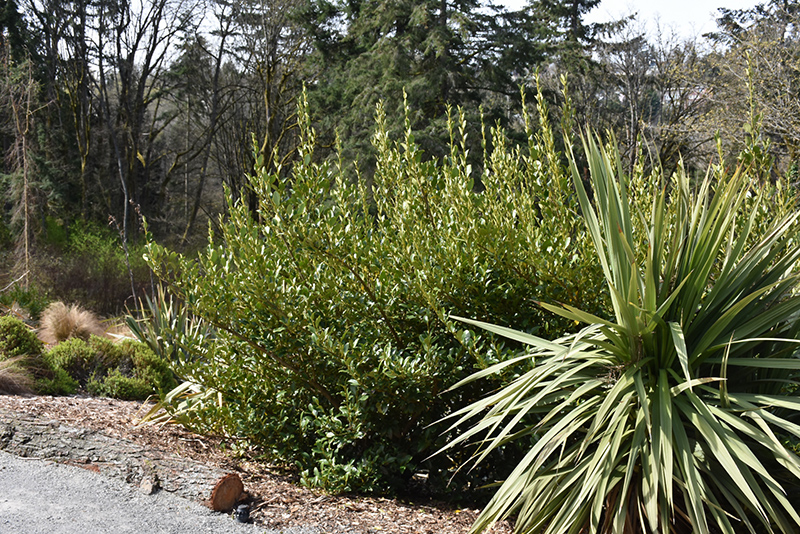Plant Finder
Height: 20 feet
Spread: 10 feet
Sunlight:
![]()
Hardiness Zone: 7b
Description:
A vigorous dense evergreen with broad glossy pale apple green leaves; a broad tree in nature, it is generally grown as a hedge or shrub with regular shearing; must have shelter from cold drying winds
Ornamental Features
Kapuka has attractive light green evergreen foliage on a tree with an upright spreading habit of growth. The glossy oval leaves are highly ornamental and remain light green throughout the winter.
Landscape Attributes
Kapuka is a dense evergreen tree with an upright spreading habit of growth. Its average texture blends into the landscape, but can be balanced by one or two finer or coarser trees or shrubs for an effective composition.
This is a relatively low maintenance tree, and can be pruned at anytime. It has no significant negative characteristics.
Kapuka is recommended for the following landscape applications;
- Accent
- Mass Planting
- General Garden Use
Planting & Growing
Kapuka will grow to be about 20 feet tall at maturity, with a spread of 10 feet. It has a low canopy with a typical clearance of 5 feet from the ground, and is suitable for planting under power lines. It grows at a medium rate, and under ideal conditions can be expected to live for 50 years or more.
This tree should only be grown in full sunlight. It does best in average to evenly moist conditions, but will not tolerate standing water. It is not particular as to soil pH, but grows best in rich soils, and is able to handle environmental salt. It is somewhat tolerant of urban pollution, and will benefit from being planted in a relatively sheltered location. Consider applying a thick mulch around the root zone in winter to protect it in exposed locations or colder microclimates. This species is not originally from North America.





